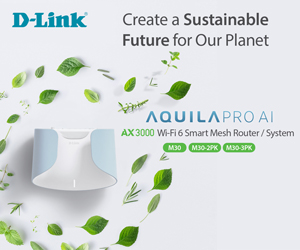Most in-car GPS maps are out of date, often leading to perilous navigation, significantly when major intersections and highway access changes.
Australia has well over 1 million kilometres of roads, including sealed highways, city and suburban streets, unsealed roads and improved dirt. The Australian government invests a whopping $15 billion annually in new and improved major road infrastructure. State and Local Council expenditures supplement this.
Estimates are that up to 30% of roads change in some way each year. This may include new interchanges, tunnels, road diversions, adding more lanes, speed limit changes, road upgrades, toll changes, etc.
As Australia’s population explodes, fuelled by immigrants often using an international driver’s licence who may not be used to right-hand driving or our road rules, it only takes one misstep to cause a deadly accident. One can no longer expect road users to know or abide by the road laws that Australians have relied on.
Accurate GPS turn-by-turn navigation is a necessity.


2018 was a watershed year for in-car GPS maps
FACT: Most in-car navigation systems made before 2018 have not had a map upgrade. Either due to the costs (often several hundred dollars), the map makers’ going out of business, or hardware incompatibility.
FACT: Since 2018, the technology has gradually changed to include Android Auto or Apple CarPlay in the built-in stereo/GPS infotainment unit. Initially, it was only available in premium cars and often at a monthly/annual subscription.
FACT: Car makers saw this as money for jam charging for ‘connectivity’ services whether you used them or not.
Outraged by the cost of updating maps, global consumer groups turned public opinion to pressure. These days, Android Auto and Apple CarPlay are generally standard features of car infotainment systems.
OK, no new in-car GPS maps mean more accidents
When people began to realise that in-car maps were hopelessly wrong, they rushed to use lower-cost third-party GPS from Mitac/Navman, Garmin, TomTom, and many others. Most offered free lifetime maps*, but the fine print read for the expected life of the unit (3-5 years) or until the unit’s storage was not large enough (many had 8GB or less) or until the map supplier could not provide new maps.
Many GPS owners found that new maps cost upwards of $200 per country and were unavailable for older in-car units that relied on DVD or microSD for updates.
Whose fault is that?
Reader Margaret Walsh asked why car makers can’t be held liable for map updates during the car’s practical life.
Car makers are quick to blame the map makers, but the reality is that the car makers are responsible. There are two map companies, Hema and Here. They own the camera/satellite-equipped cars and planes sent out to map new roads and changes. Data is gathered, verified and uploaded to their map servers. This is a costly exercise. Raw data is sold to car makers and GPS manufacturers to recoup that.
This is where the glacial pace sets in. The maps need to be massaged into a plethora of infotainment head units, operating systems, navigation parameters, and car-specific control parameters. Very often, the car maker’s ‘latest’ map is two to three years old anyway when you get it.
Hint: Anyone promising third-party map updates for older vehicles is likely selling you old maps.
Enter Google and Apple
GPS is a killer app for these companies. They buy map data but own some mapping infrastructure such as camera cars, planes (flyover feature) and satellites.
Maps are vital to these companies. They allow them to convert your GPS location to actionable data that can drive advertising—find nearby petrol stations. Apple and Google now have EV routing to ensure you get to a charger. They also connect to live traffic data feeds provided by the Government and councils (cameras) and have walking, cycling, and off-road routes.
Google and Apple’s maps are much more up-to-date. They only have to massage map data for Android or iOS—not tens of thousands of car models.
Car makers have now abrogated their responsibility to Apple and Google – there are other ways to rip off car buyers.
Alternatives, and they are all Google or Apple-based!
Android Auto and Apple CarPlay offer hands-free phone operation, digital audio broadcasts (DAB) access, and interfaces for Android and iPhone notifications, calendars, maps, etc. The Catch-22 is that you need a phone and mobile data internet connection. At a minimum, you will connect via a USB-C or Lightning cable via your car’s USB-A port. Some support Bluetooth connection as well.
Hint: I may be biased but Android Auto is easier to use. According to Drive.com.au ‘Based on pure category wins, Android Auto is the superior smartphone mirroring system. Thanks to its inclusion of Facebook Messenger, its unobtrusive notifications, and the easier skipping between alternative routes when mapping’.

A dealer can confirm if you have a compatible Android Auto/Apple CarPlay infotainment unit. They can arrange for a firmware update. Cars from before 2018 are generally too old. Costs depend on the brand, starting at about $300.
If your infotainment unit is not compatible, you can buy a third-party Android Auto and Apple CarPlay unit. These usually fit straight into where the old unit was using the car’s existing power connector, speakers, microphone and GPS receiver. Prices start from $1000 plus fitting.
You can buy an Android Auto/Apple Car Play windscreen mount unit like the Laser 7″ portable. Our old review is here NAVIG[8]R Wireless CarPlay – Android Auto or Apple CarPlay. It is excellent value for $99 and music comes via your FM car radio or a 3.5mm jack.

The lowest cost is a car mount for your phone. These start from $30 plus a 12V Cigarette lighter power adapter. Please note that some States consider this as using your phone; L, P1 and P2 licences absolutely should not use them.
Positives and Negatives
Apple and Google Maps are generally more up-to-date. But remember that their primary purpose is to harvest your data to aid in selling advertising. They certainly do not tell you the full story about surrounding businesses or Points of Interest (unless these are advertisers).
Android Auto and Apple CarPlay need a live internet connection via mobile data. Google Maps uses about 5MB per hour, and Apple Maps uses about 10MB. You can increase mobile data use by enabling options like speed cameras, school zones, live traffic, points of interest, etc.
Both allow you to plan a route at home via Wi-Fi. This downloads the relevant map portions to enable offline use, but you lose any alerts and notifications.
Most infotainment screens are 7” or larger and in 16:9 landscape format. Smartphone screens are usually 9:20 in portrait format, and you lose a lot of screen real estate.
Infotainment units usually have better volume and far-field mics, enabling you to hear and be heard better.
Leaving your phone in a hot car can result in a Lithium-ion fire or theft hazard.
Smartphone GPS is usually accurate to between 3 and 10 meters. This can be too large for turn-by-turn navigation at normal road speeds. GPS test for Android will indicate accuracy. We cannot find a comparable Apple app.

Whatever the outcome, it all comes down to Google and Apple, as there is no money to be made by selling in-car map updates.









Comments